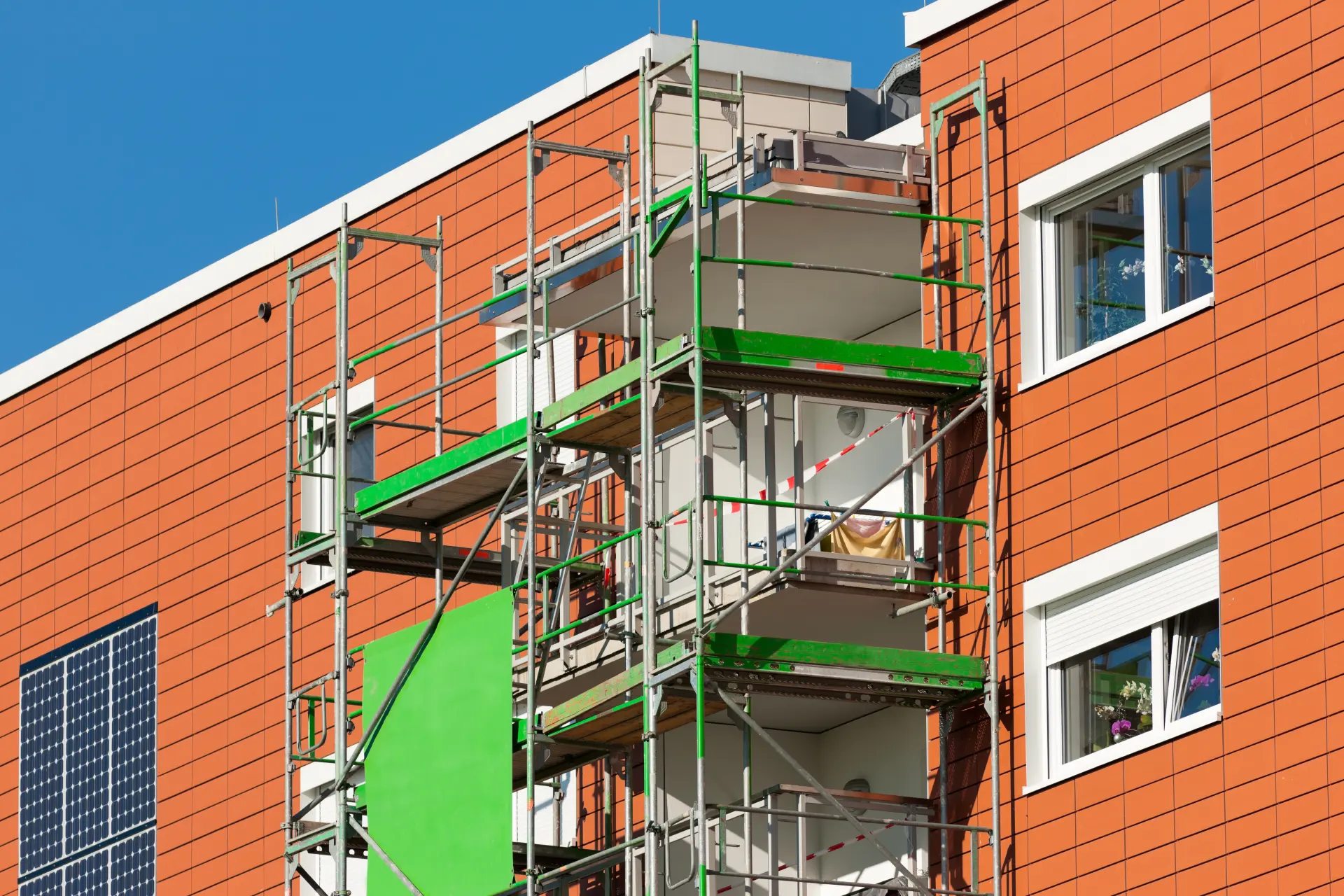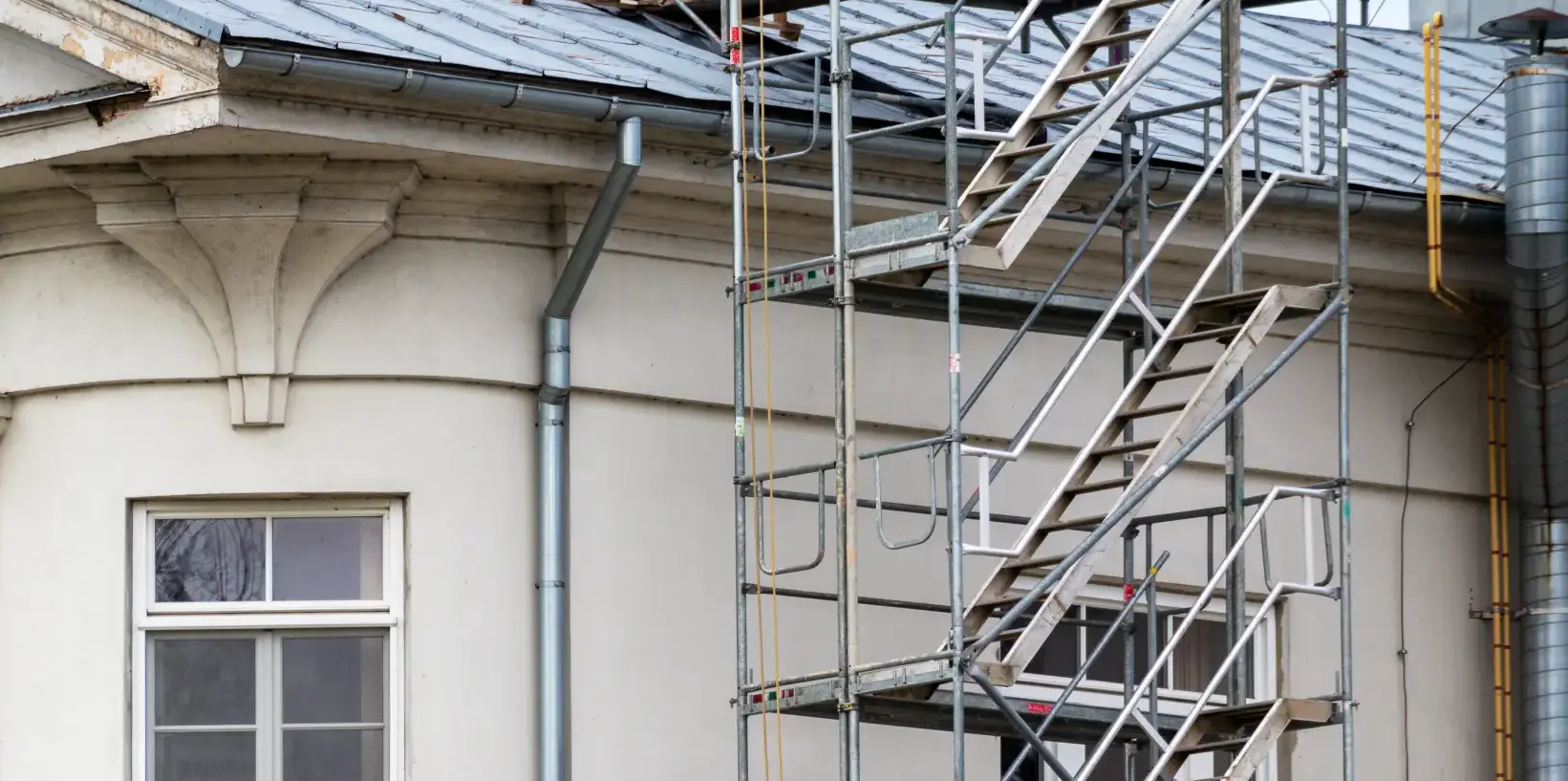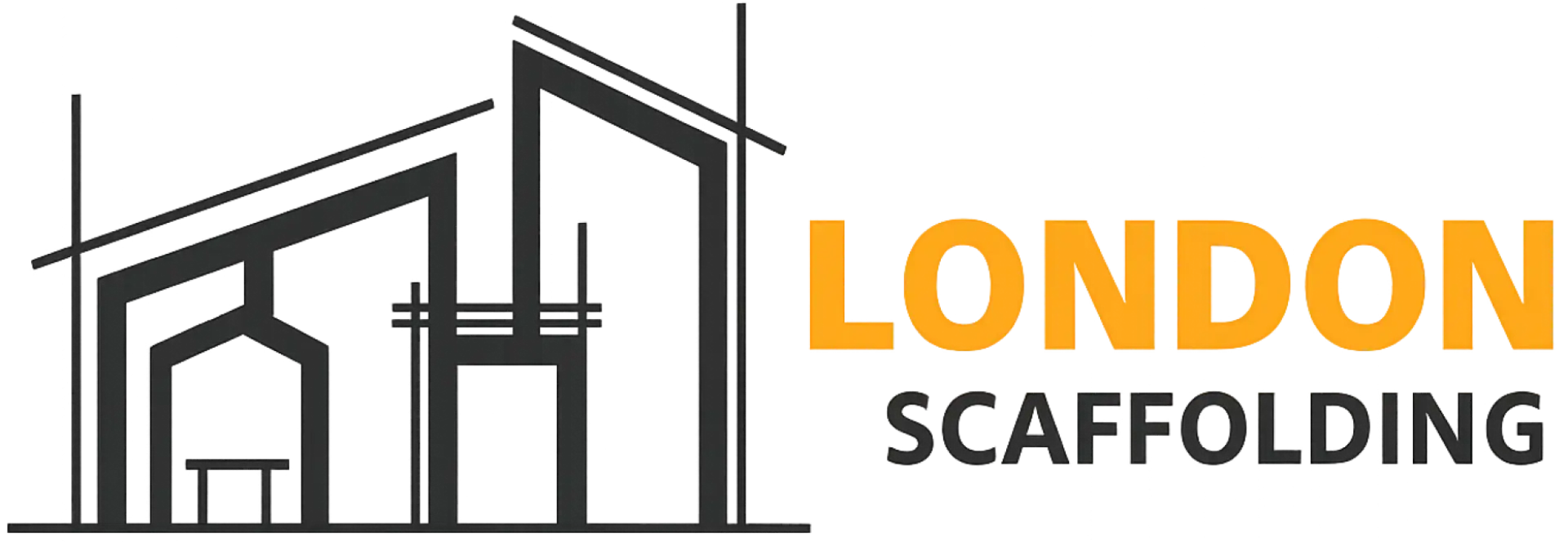Supported Scaffolding
Supported scaffolding is a temporary, ground-bearing access system that's assembled from steel, aluminium tubes or proprietary system frames with timber or composite boards. The vertical stands carry loads into base jacks and sole boards, the ledgers and transoms create level work platforms, while the ties, guardrails, toe boards and debris netting provide stability and edge protection. Unlike suspended platforms, supported scaffolding transfers the weight directly into the ground or slab, so that workers can carry heavier loads and materials with ease.
Across the UK, supported scaffolding is mainly used for re-cladding, window replacement, stone repair and deep retrofit projects. Additionally, industrial facilities, such as power stations, refineries, chemical plants, and food or pharmaceutical factories, also use these scaffolds to reach pipe racks, vessels, chimneys and conveyors during shutdowns and maintenance services. Transport and infrastructure owners also use supported scaffolding on bridges, rail stations, tunnels and airports for painting, waterproofing and structural repairs.
Suspended Scaffolding
Suspended scaffolding is a temporary work platform that's hung by steel wire ropes from roof rigs, davits or monorail tracks. Unlike supported scaffolds that are fixed to the ground, suspended systems carry loads to the host structure through counterweighted or fixed restraints at the roof level. A typical suspended cradle includes a lightweight aluminium deck with guardrails and toe-boards, end stirrups, powered traction hoists, an independent secondary safety line with an overspeed device, and fall-arrest equipment.

Since they minimise street-level disruption and can be installed quickly, suspended platforms are commonly used for façade cleaning, glazing replacements, sealant and mastic works, re-cladding, and painting on medium- to high-rise offices, hotels and towers.
Suspended platforms and modular cradles are also used underneath bridges and viaducts for soffit inspections, steelwork preparation and coatings, bearing replacements and joint repairs, especially over rivers, rail corridors or live carriageways where ground-bearing access is impractical.
In the heritage sector, these cradles enable workers to perform thorough façade conservation projects on buildings where scaffold ties are undesirable, such as cathedrals or museums.
Rolling Scaffolding
Rolling scaffolding, or a mobile access tower, is a lightweight, free-standing scaffold that's mounted on lockable castors so that it can be repositioned without needing to be dismantled. This type of scaffolding is typically fabricated from aluminium, and the tower is comprised of end frames, braces and trapdoor platforms with integrated guardrails and toe boards.
Because they're easy to set up and relocate, rolling scaffolds are mainly used for short-term, multi-location tasks, such as suspended-ceiling work, painting and signage projects. Rolling scaffolds can also be used in schools, universities and hospitals for routine maintenance like replacing light fittings, testing smoke heads, repairing ductwork and cleaning open areas without blocking corridors for long periods of time.
Cantilever Scaffolding
Cantilever scaffolding or a truss-out scaffold is an access structure that projects out from a building so that platforms are supported without putting weight on the ground below. This type of scaffolding is often made from steel or aluminium beams, or lattice or UB sections, that are fixed to the host structure through drilled anchors or needle beams. The load path runs from the platform into the cantilever beams and back into the building, so every part of the structure needs to be designed and set up by a competent engineer.

Cantilever scaffolds are used in areas where ground access is blocked, unsafe, or where it must stay open. Shopfronts with glass canopies, awnings and narrow pavements often use cantilever scaffolding so that pedestrians can continue with their day underneath.
Cantilever scaffolding can also be used over live carriageways, bus lanes and service yards, as well as canals, rail corridors and bridges. In heritage settings, this type of scaffolding reduces the risk of intrusive fixings being attached to stone and allows workers to gain access to tight spaces.
At London Scaffolding, we can supply, erect and inspect safe scaffolding structures. Whether you need supported, suspended, cantilever or mobile towers, we can provide what you need.

